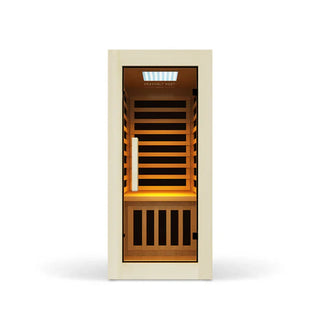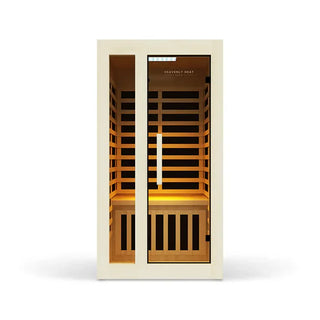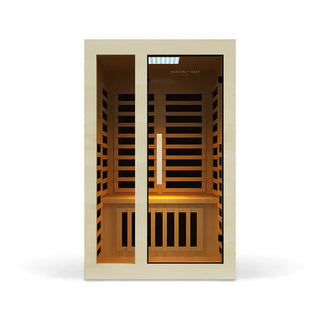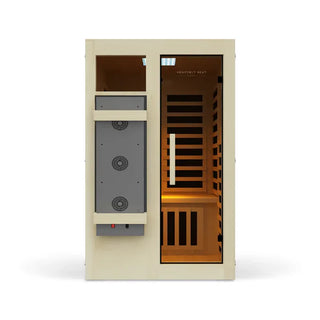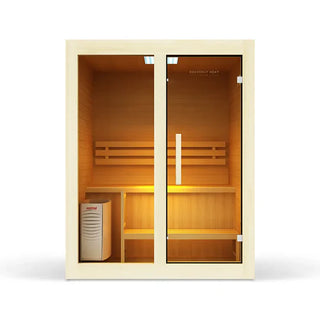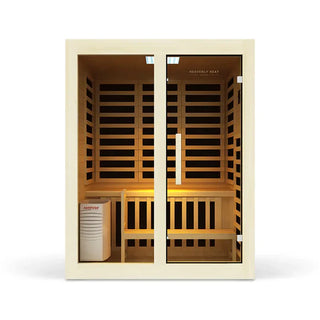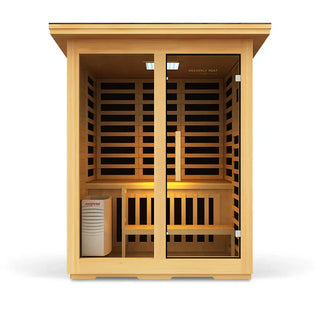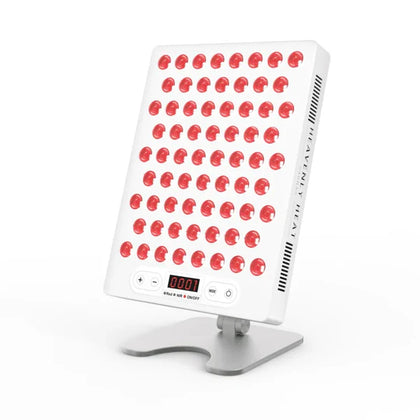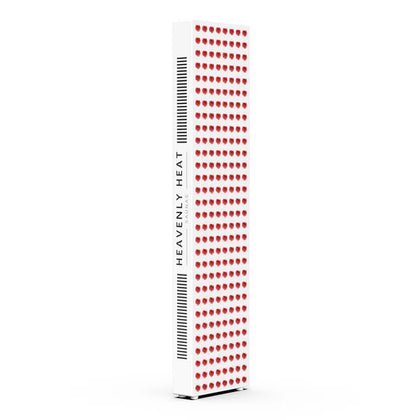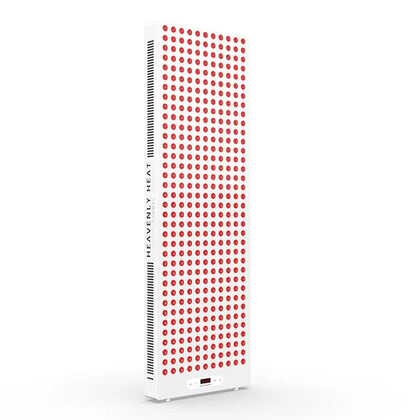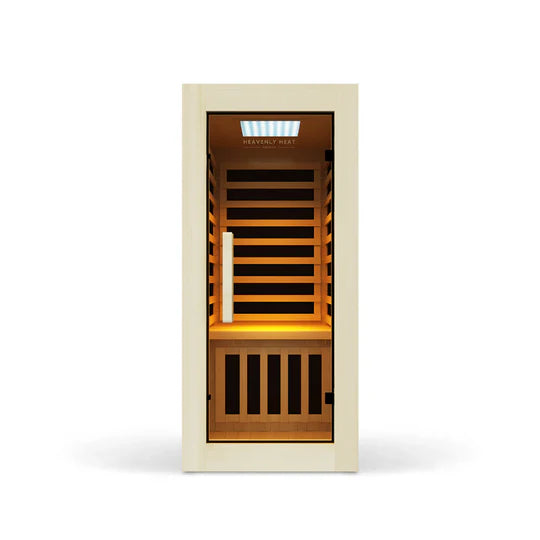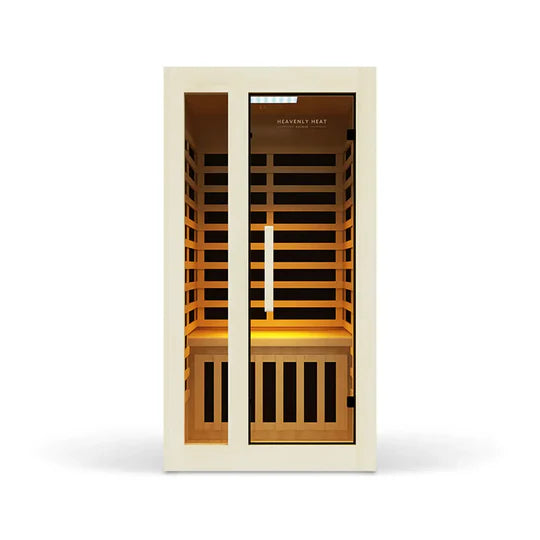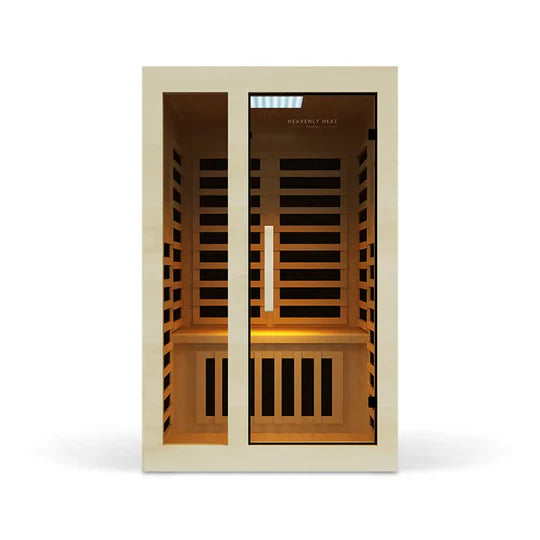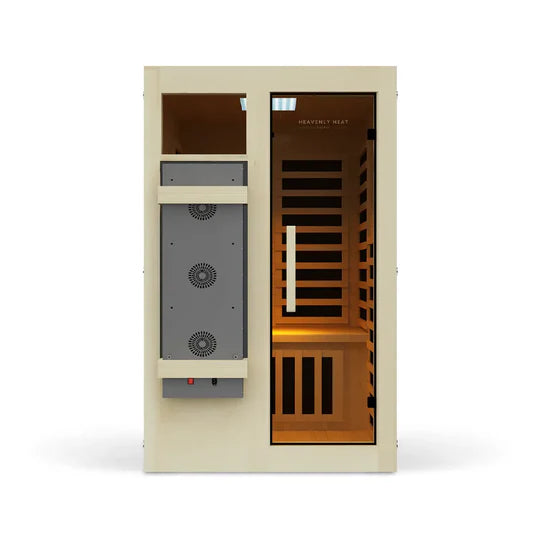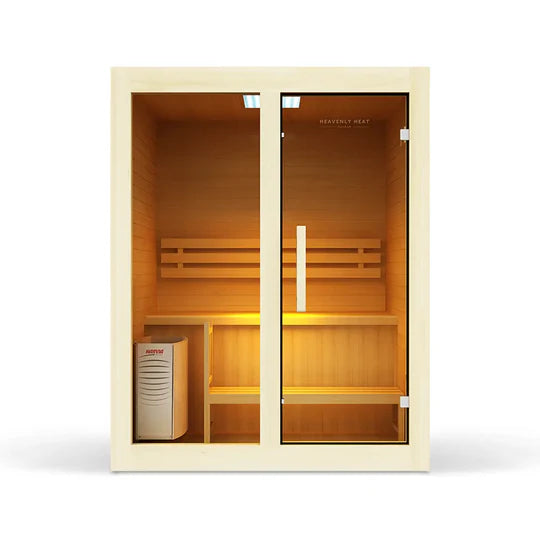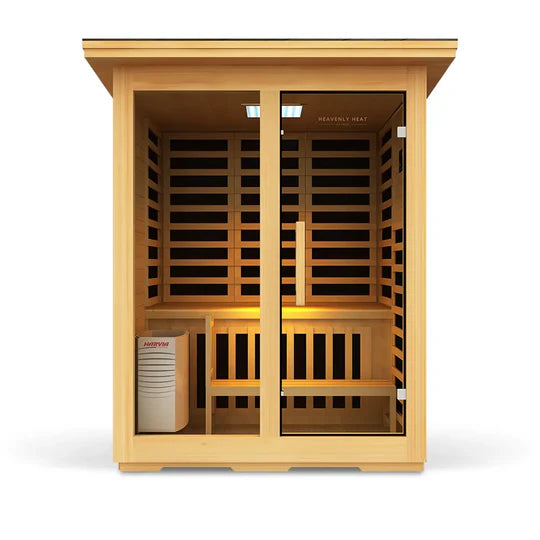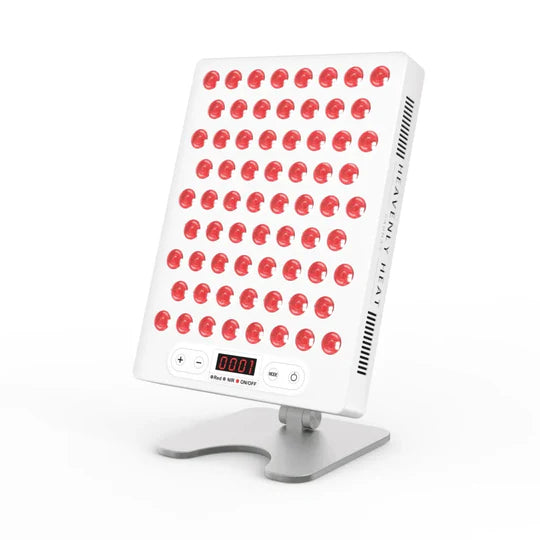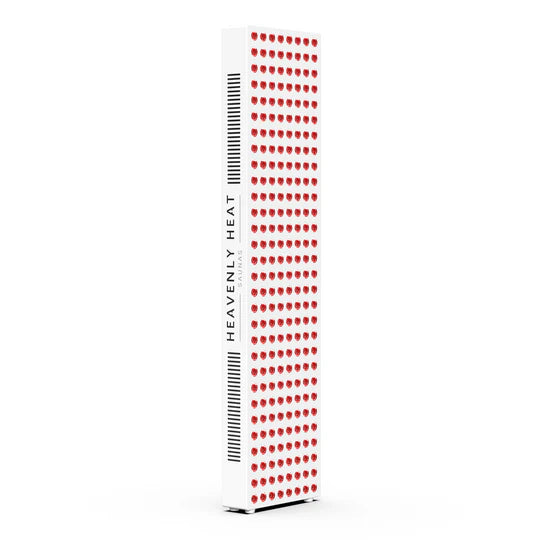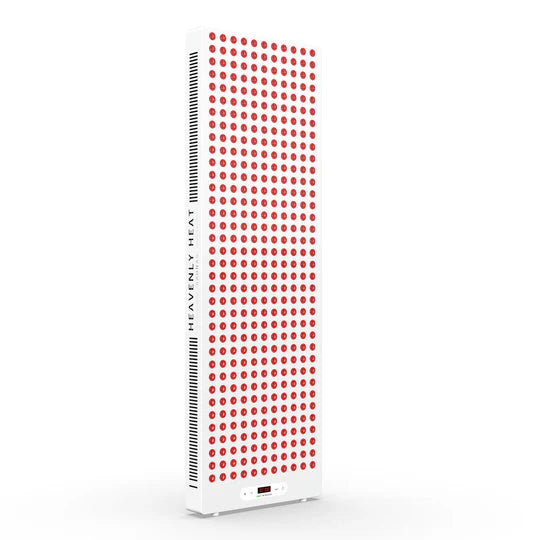Why Do You Have Headaches After Sauna?
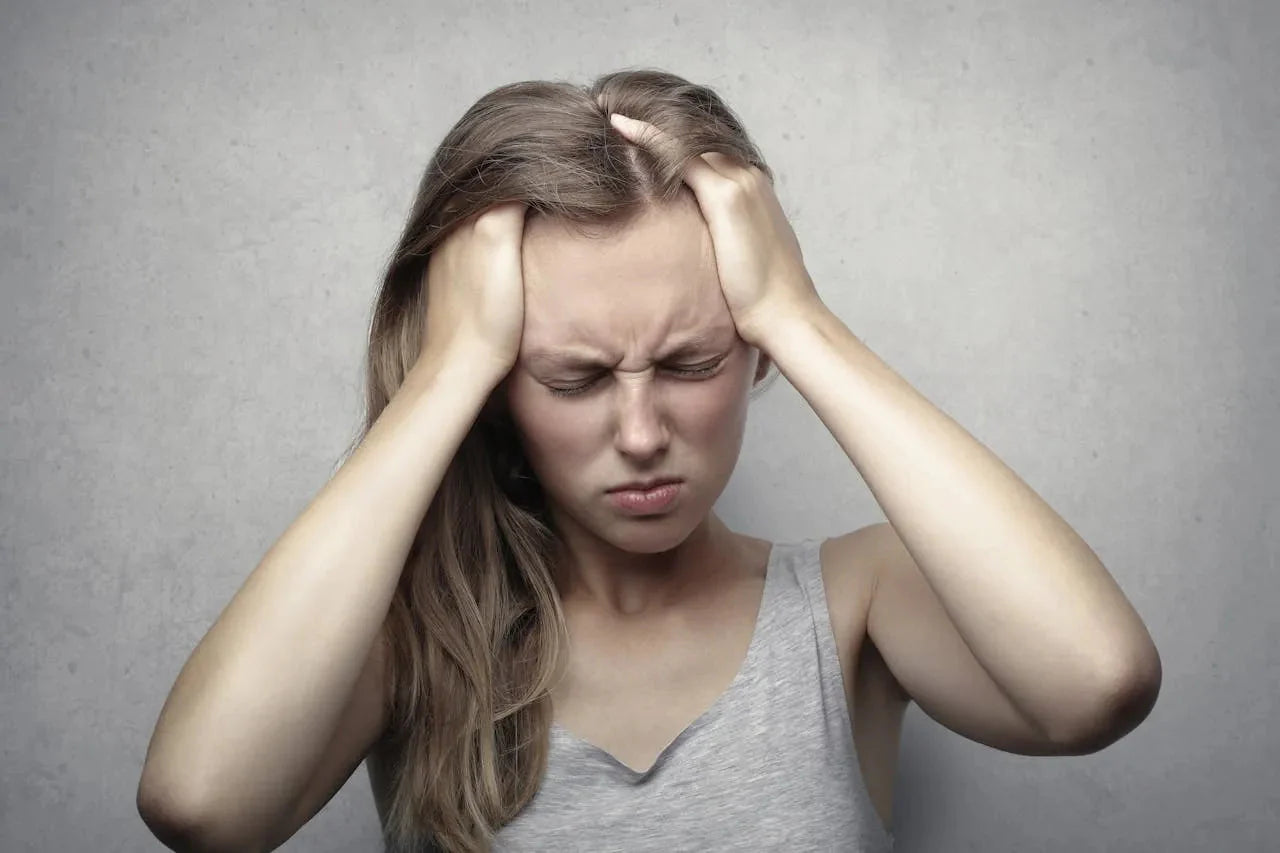
Ever stepped out of a relaxing sauna only to be hit with a throbbing headache? You’re not alone, this is a common issue for many sauna-goers.
That blissful experience can quickly turn frustrating when discomfort takes over, ruining the benefits you hoped to enjoy.
Let’s dive into why this happens and how you can prevent post-sauna headaches.
Can a sauna help a headache?
- Sauna Sessions Can Reduce Headache Intensity: A study published in The Journal of Alternative and Complementary Medicine found that regular sauna sessions for eight weeks helped reduce headache severity. Participants experienced a significant drop in pain intensity, averaging a 1.27-point reduction on a pain scale from 0 (no pain) to 10 (worst pain).
- Heat from Saunas Helps Relax the Neck and Shoulders: The heat in saunas loosens tight muscles in the neck and shoulders, which are common areas for tension headaches. This relaxation helps ease the pain and makes headaches more manageable.
- Factors Like Dehydration Can Cause Headaches After Sauna Use: While saunas can relieve headaches, they can also trigger them in some individuals. Dehydration, blood pressure changes, or electrolyte imbalances are common causes of headaches after sauna use. Conditions like poor sauna ventilation or using the sauna on an empty stomach may also contribute.

Why Do You Have Headaches After Sauna?
Dehydration
- Hot Weather Increases Dehydration Risk: "Headaches are more likely to occur during summer months when temperatures are elevated outdoors. The frequency and intensity both may rise more than the usual ones," says Dr. Pirzada , Consultant Physician and Intensivist, Mumbai. This is because higher temperatures increase sweating, leading to greater fluid loss and a higher risk of dehydration.
- Sauna Heat Leads to Dehydration: When you step into a sauna, the heat can lead to heavy sweating, which may cause dehydration. Exercising and sauna heat together strain circulation, increasing dehydration risk.
- Electrolytes Are Better Than Water Alone: In such cases, electrolyte-infused beverages can be more effective than water alone in preventing dehydration headaches, as they replenish essential minerals like magnesium, potassium, and sodium that water alone can’t provide. It’s crucial to recognize the signs, such as dizziness, fatigue, excessive thirst, and confusion.
- Drink Water Before, During, and After Sauna: To help avoid dehydration-related headaches, it’s essential to drink water regularly before, during, and after your sauna session. Aim for about two liters of water throughout the experience, ensuring you stay hydrated and feel great while you relax. Staying hydrated is key to preventing those uncomfortable symptoms and making the most of your sauna time.
Changes in blood pressure
- Sauna Heat Affects Blood Pressure and Heart Rate: Changes in blood pressure can trigger headaches in the sauna. A study published in Complementary Therapies in Medicine examined how sauna heat impacts blood pressure and heart rate. Nineteen healthy adults were monitored during a 25-minute sauna session at 93°C and a 30-minute rest period.
- Blood Pressure and Heart Rate Rise in Sauna: The study found that sauna use significantly increased both systolic and diastolic blood pressure, along with heart rate. Systolic blood pressure measures the force of blood against artery walls during heartbeats, influencing heart disease risk. Sudden temperature swings shock blood vessels, spiking pressure and headache risk.
- Drop in Blood Pressure After Sauna Can Cause Headaches: After the sauna session, blood pressure dropped below baseline levels. This drop in blood pressure after the sauna can lead to headaches, especially for those who struggle with low blood pressure.
- Consult a Doctor If You Have Low Blood Pressure: It’s best to consult your doctor if you have a low blood pressure condition before using a sauna.
Electrolyte imbalance
After a sauna session, you might notice signs of electrolyte imbalance like headaches, confusion, irritability, fatigue, or a fast heart rate.
This happens because the heat makes you sweat, leading to the loss of important electrolytes like sodium and potassium.
To restore balance, it’s essential to drink water or an electrolyte drink to replenish what’s been lost.
Pre-existing Medical Conditions
- Having High Blood Pressure Can Make Sauna Headaches Worse: When you already have high blood pressure, the heat from the sauna increases blood flow, which can bring on a headache during your session.
- Joint Problems Can Turn Sauna Heat Into Head Pain: If you have arthritis or inflamed joints, the heat may make things worse and cause tension headaches as your body reacts to the discomfort.
- Heart or Breathing Issues Make Headaches More Likely in the Sauna: People with heart disease or lung problems may struggle with the hot air, and this stress on the body can lead to headaches.
- Diabetes and Migraines Can Make the Heat Hard to Handle: If you have diabetes or often get migraines, the sauna heat might be too much for your system and trigger head pain.
- Slow Metabolism From Thyroid Issues Can Lead to Overheating: Those with hypothyroidism may not handle heat well, and this can cause their body to overheat and result in a headache.
- Talking to a Doctor First Can Help You Avoid Sauna Problems: If you have any of these health issues, checking with a healthcare provider before using a sauna is a smart and safe move.
Lack of ventilation in saunas
- When hot air gets trapped, your head starts to hurt: Poor ventilation in saunas traps heat and humidity, which causes dehydration and lowers oxygen levels. This puts pressure on your body and often leads to headaches.
- A balanced sauna feels better and doesn’t hurt your head: Keeping the sauna between 45–60°C with 40–55% humidity in a well-ventilated space helps your body breathe easier and reduces the chance of discomfort or headaches.
- Dirty, closed saunas make the air hard to breathe: If the sauna isn’t clean or fresh air isn’t moving, it can build up stale air or even fungal spores. This can trigger sinus or allergy headaches and make you feel worse.
- Cooler air inside the sauna helps you feel more relaxed: Lowering the overall heat in the sauna still warms your body, but it doesn’t make the air feel heavy or suffocating. That helps reduce the risk of headaches and dizziness.
- Moving the air around makes a big difference: Letting in fresh air, by opening a vent, using a fan, or even cracking the door, keeps the sauna from getting stuffy and helps stop headaches before they start.
Empty stomach
Entering a sauna on an empty stomach can lead to low blood sugar, causing headaches.
When your body doesn’t have enough fuel, the heat may amplify discomfort. To avoid headaches, eat a light snack like fruits, nuts, or yogurt for about 30 minutes before entering the sauna for stable blood sugar.

How can I prevent headaches after a sauna?
Take a shower
- Taking a cold shower cools your body and reduces headache chances: To prevent headaches after a sauna, taking a cold shower can really help. It cools your body down, helps regulate your temperature, and brings blood flow back to normal, which may ease headache symptoms.
- A cold plunge after showering makes your body feel even better: Some also find that following up with a cold plunge or ice bath, rather than just a shower, enhances circulation, reduces inflammation, and promotes better mental clarity.
- Waiting before your shower helps your body adjust safely: It’s best to wait 10–15 minutes before jumping in the shower, starting with warm water and then cooling down gradually.
- Showering washes off sweat and leaves you feeling fresh: This also washes away sweat , leaving you refreshed and helping your body recover better.
Wear Sauna-friendly Clothing
- Wearing light clothes helps your body stay cool in the sauna: Sauna-friendly clothing like cotton lets your skin breathe and prevents your body from getting too hot. This helps avoid the overheating that often causes headaches after using a sauna.
- A soft cap protects your head from too much heat: Wearing a cotton or wool cap keeps direct heat off your head. This small step can stop the heat from triggering headaches and makes your sauna time feel much more relaxing.
Don’t stay in the sauna for too long.
Don’t stay in the sauna too long, as overheating and dehydration can trigger headaches. When your body overheats, blood vessels expand, leading to head pain.
To prevent this, limit your sauna time to 15-20 minutes, stay hydrated, and take breaks to cool down.
Controlled Breathing Techniques
- Breathing in a calm way helps your body handle sauna heat: Controlled breathing improves how oxygen moves through your body and calms your nervous system, which helps prevent the kind of tension that causes headaches after a sauna.
- Breathing slowly with the 4-7-8 method makes your body relax: Using the 4-7-8 breathing technique (inhale for 4 seconds, hold for 7, exhale for 8) sends a signal to your body to relax, which lowers stress and keeps headaches away.
- Breathing deeply into your belly helps you feel more at ease: When you breathe into your belly instead of your chest, your body gets more oxygen and starts to relax. This kind of breathing also makes your lungs stronger and helps you feel calmer after the sauna.
- Taking slow breaths helps lower blood pressure and stop dizziness: Slow and steady breathing helps your blood pressure stay normal, which can stop the dizzy feeling or headache some people get after sitting in a sauna.
- Focusing on your breathing keeps your body balanced and headache-free: When you pay attention to breathing in a steady, calm way, your blood flows better, your oxygen stays balanced, and you’re less likely to feel worn out or get a headache after the sauna.
| Do | Don’t |
| Stay hydrated | Enter the sauna dehydrated |
| Limit session to 15-20 minutes | Stay in too long |
| Eat a light snack beforehand | Enter on an empty stomach |
| Ensure proper ventilation | Use a poorly ventilated sauna |
| Take breaks and cool down | Ignore signs of overheating |
| Wear light, breathable clothing | Overdress in heavy fabrics |

Can Certain Foods or Drinks Before a Sauna Increase Headache Risk?
- Salty Foods and Alcohol Dehydrate Your Body: Salty foods and alcohol pull water from your body, increasing the risk of dehydration and making headaches more likely before a sauna session.
- Caffeine Can Trigger Headaches by Narrowing Blood Vessels: Caffeine may narrow your blood vessels, leading to headaches after spending time in the heat of a sauna.
- Low Electrolytes Make It Harder to Stay Hydrated: A diet lacking in essential electrolytes like potassium and magnesium can make it more difficult for your body to stay hydrated, increasing the chance of a headache.
- Heavy Meals Disrupt Digestion and Blood Flow: Eating a heavy meal before a sauna session can make digestion harder and affect blood flow, leading to discomfort and headaches.
- Hydrating Snacks Help Prevent Post-Sauna Headaches: Choose light, hydrating snacks like watermelon, oranges, and berries to stay hydrated and avoid headaches after the sauna.
Conclusion
Headaches after a sauna are commonly caused by dehydration, blood pressure changes, electrolyte imbalances, pre-existing medical conditions, poor ventilation, or entering on an empty stomach.
Recognizing these factors and taking preventive measures, such as staying hydrated, maintaining proper ventilation, and avoiding prolonged sauna sessions, can help you avoid discomfort.
While saunas offer great relaxation benefits, understanding your body’s limits is key to ensuring a safe and enjoyable experience
FAQs
Can wearing the wrong type of headgear or accessories in a sauna contribute to headaches?
Wearing the wrong headgear in a sauna can cause headaches. Tight hats or headbands restrict blood flow, while non-breathable materials trap heat. Wet towels can also trigger headaches due to the combination of moisture and heat. Sauna-specific caps, if too tight, increase pressure and heat buildup. To avoid this, choose breathable, lightweight headgear that fits comfortably and allows air circulation.
Is sensitivity to heat or personal heat tolerance a factor in post-sauna headaches?
Low heat tolerance can increase the likelihood of headaches after a sauna session. If your body struggles with heat, it can cause discomfort, especially if you're sensitive to higher temperatures. Gradually increasing sauna session lengths can help improve heat tolerance and reduce post-sauna headaches.
Could your breathing technique or respiratory condition affect the likelihood of a headache after using a sauna?
Breathing plays a crucial role in how your body handles heat and humidity in a sauna. Shallow or rapid breaths can cause headaches due to low oxygen levels, especially for those with respiratory issues like asthma or nasal congestion. In contrast, controlled, deep breathing increases oxygen flow, promotes relaxation, and reduces the risk of headaches. Slow, deep breaths help your body manage the sauna’s heat and prevent discomfort.
Do hormonal fluctuations (e.g., during menstruation or menopause) make you more prone to sauna-induced headaches?
Hormonal fluctuations during menstruation and menopause can increase the risk of headaches in the sauna. Menstruation can make women more sensitive to physical stress, while fluctuating estrogen levels during menopause and perimenopause, along with hot flashes, can affect blood pressure and trigger headaches. Recognizing these links can help manage sauna-related headaches.
